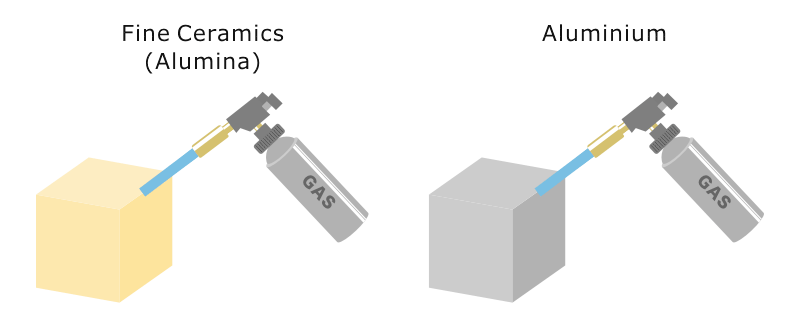Thermal degradation of ceramic capacitors thermal degradation analysis is needed to determine if these ceramic capacitors can survive this placement on the pcb.
Ceramic temperature degradation.
The temperature of 150c for 1 hr is okay and then the part degrades over it s lifetime for a x5r or less so for an x7r and almost no degradation over lifetime for a c0g.
Ceramics can degrade in many types of ways they can warp over time especially when exposed to high temperatures.
Thermal degradation and aging of high temperature piezoelectric ceramics.
A sudden change can cause rapid and unequal expansion or contraction that set up tensile stresses in.
In high temperature applications ceramic matrix composites also show increased creep resistance when compared to that of the unreinforced corn t presented at the world congress on high tech ceramics 7th cimtec held in montecatini italy 24 30 june 1990.
A common degradation issue in ceramics involves soluble salts.
It just makes it into smaller bits.
Therefore to understand the performances of plasma spray ceramic coatings several investigations concerning degradation characteristics including tribological characters and sdhesive strength have been conducted in recent years 3 4.
From this we know that the part can survive 260c but the manufacturer doesn t want the part to dwell at that temperature for more than 30s.
Ultra high temperature ceramics uhtcs are a class of refractory ceramics that offer excellent stability at temperatures exceeding 2000 c being investigated as possible thermal protection system tps materials coatings for materials subjected to high temperatures and bulk materials for heating elements.
Also their high temperature corrosion and oxidation properties were investigated in some papers 5.
Brittle materials especially ceramics are prone to fracture by sudden changes in temperature.
Secondly they can start to obtain surface cracks called dozlers over time they.
Ie there is a temperature for every clay body where chemically bound water molecules are removed typically around 600c 700c from the body s makeup.
Concussion grinding cause degradation to the form but not the actual ceramic material.
This combination of high strength and improved toughness has resulted in better performance in structural applications and in appli cations where thermal shock and foreign object damage are important modes of degradation.
Ceramic capacitor manufacturers have aggressively increased the capacitance of their products.
Ceramic fired in high temperatures may also be susceptible to water if their mineral particles are soluble in water for example gypsum or calcite.
If a clay body hasn t been fired hot enough for the chemical change to occur then it will degrade.
Water can dissolve or deform ceramics that have been low fired i e.




























